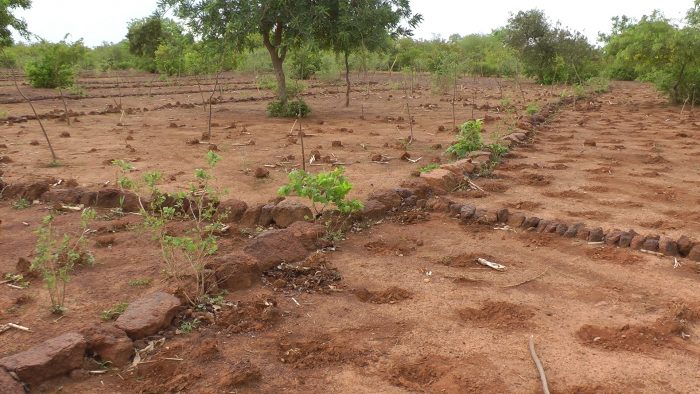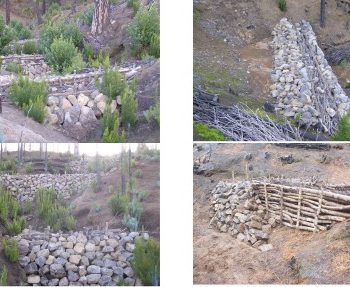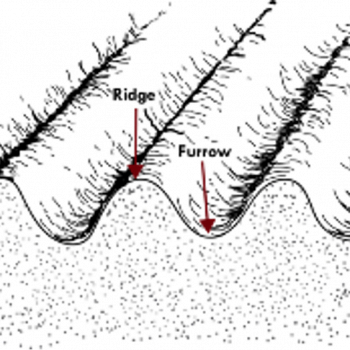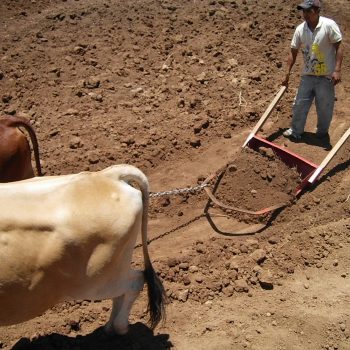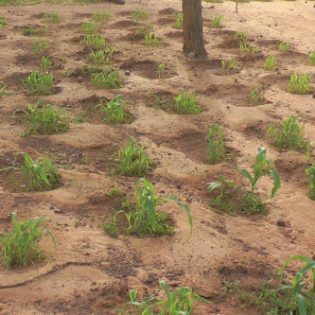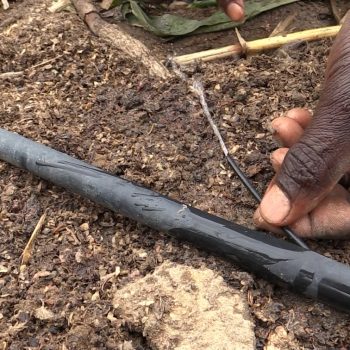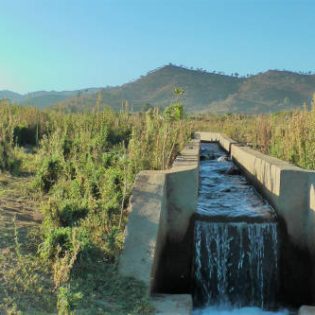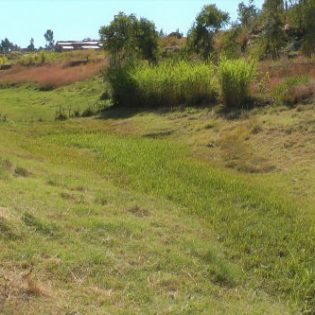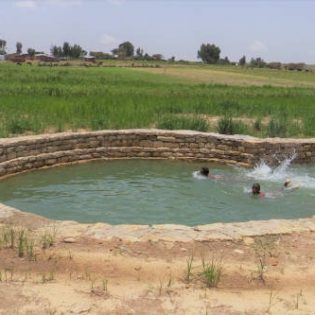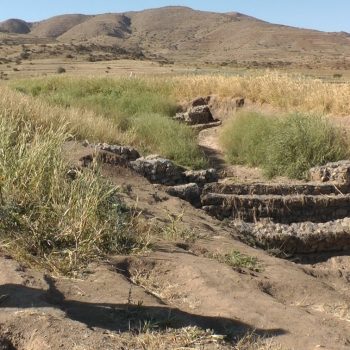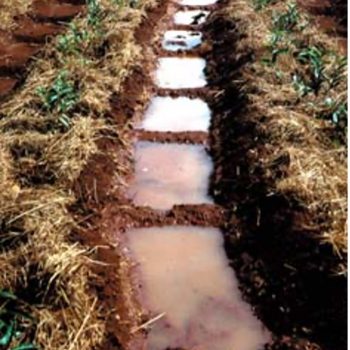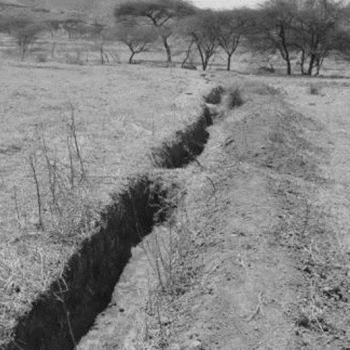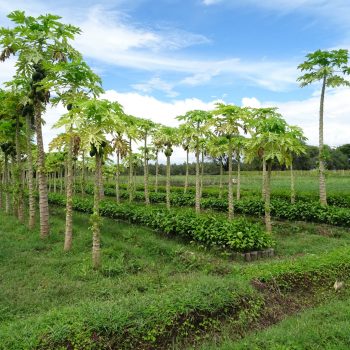| Contour bunds are small barriers to capture runoff coming from external catchments and possibly to a field where crops are to be grown. Bunds slow down water flow on the ground surface, reduce erosion, encourage infiltration and soil moisture and increase yields. Contour bunds exist in many different designs and have been globally used as a means of water buffering and soil conservation.
Stone bunds is one example of how the basic principles of contour bunds can be applied. On gentle slopes, stone bunds are also used for harvesting water for the crops in between the lines and increase crop production (Gurtner et al., 2011; Liniger and Critchley, 2007). Stone bunds are suitable for arid and semi-arid areas, but when the soils are well drained, they can also be applied in wetter zones. Stone bunds are used on sandy, sandy/loamy crusty soils and on slopes less than 5%. Small stone ties can be constructed every 5 m along the upslope face of the bund for an even distribution of the impounding water (Desta et al., 2005). The width and, consequently, the height of the bund vary considerably with slope and availability of construction material. Sometimes the structure can be just one stone high. When enough sediments have been trapped behind the structure, the stone bunds can be upgraded to stone-walled level terraces by carefully raising their height (Desta et al., 2005). Trapezoidal bunds are a type of non-enclosed bunds which upstream side is left open to collect water from the slopes and its downstream side is enclosed on three sides by a trapezoidal shaped bund with 45° angles (Critchley & Reij 1992). They enclose large areas (up to 1 ha) and they are usually made out of soil. The wings of the side bunds are preferably reinforced with stones. Trapezoidal bunds are not suitable for steep slopes because the construction would involve prohibitive amounts of earthwork and they should not be built on cracking clay soils that will not be able to hold the water. The most common uses of trapezoidal bunds is cereal cultivation within the enclosed area and livestock watering. The spacing of the trapezoidal bunds can vary depending on the ration between catchment and cultivated area and the climate (for example in arid areas there is less water to go around and the spacing may be larger).
|
Additional information
| Agriculture | Flood/spate irrigated, Rainfed (Crop) |
|---|
